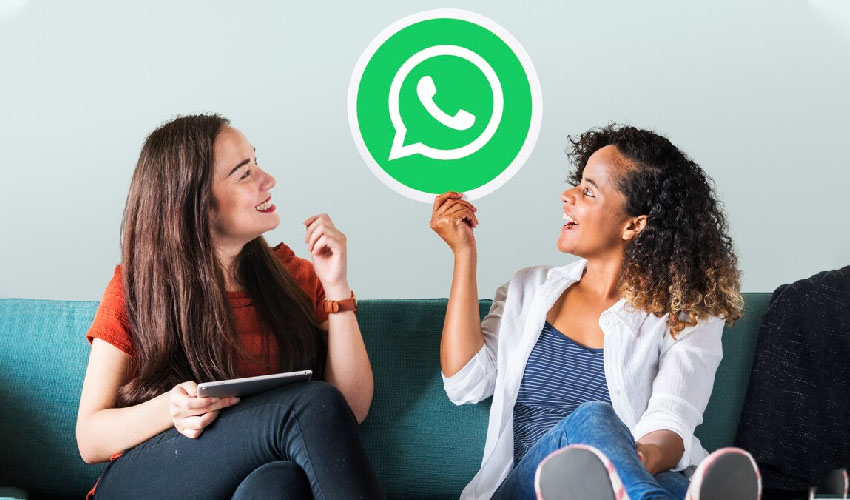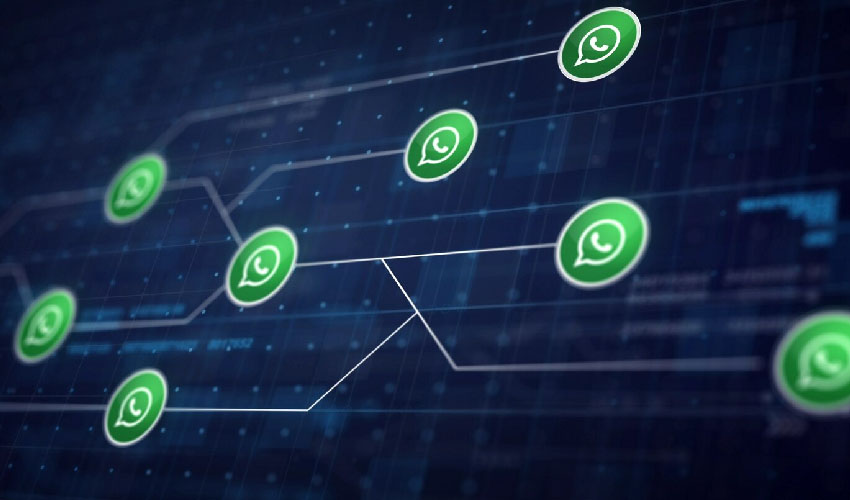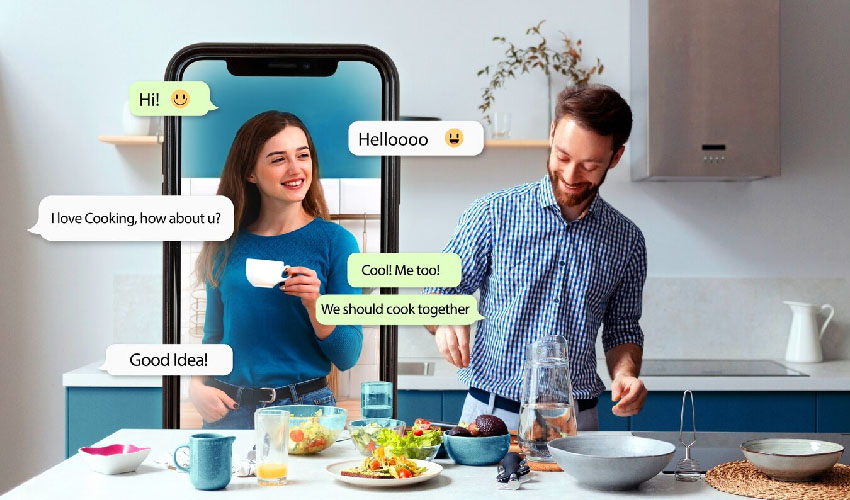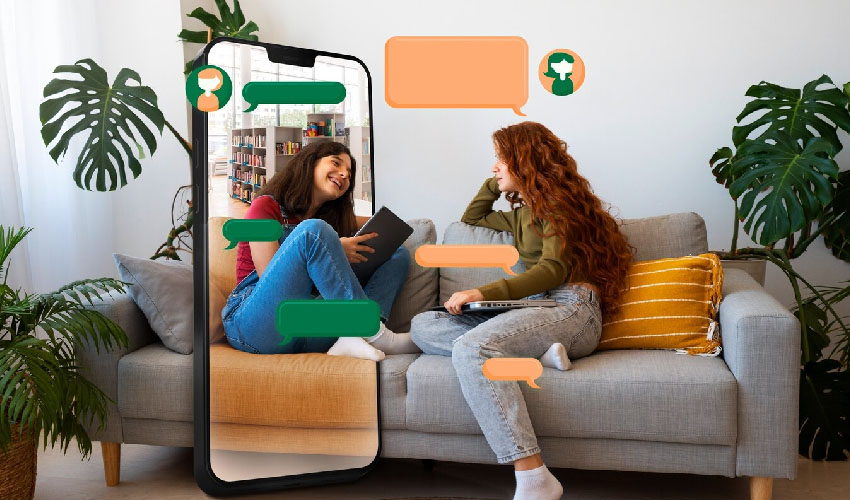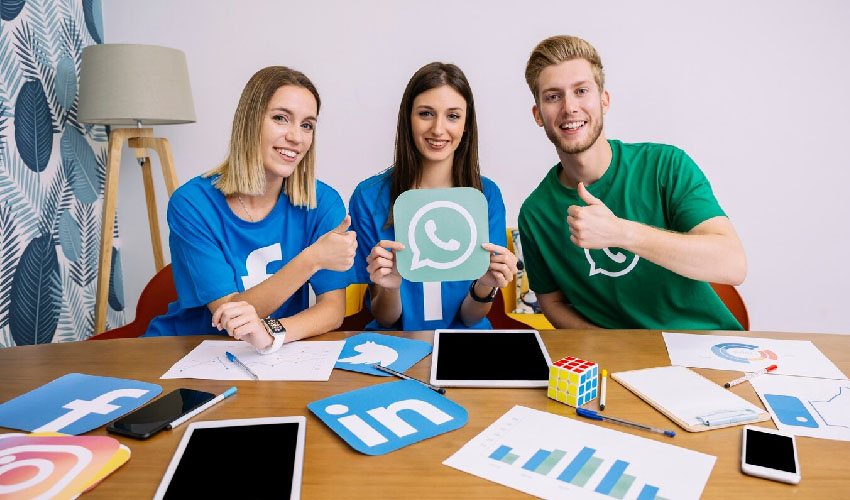Table of Contents
Introduction to WhatsApp Clone Development
In the ever-evolving landscape of digital communication, the development of messaging apps has become synonymous with innovation and connectivity. WhatsApp, a trailblazer in the field, has set the standard for seamless and secure communication. As businesses and entrepreneurs seek to capitalize on this trend, the concept of WhatsApp clone development has emerged as a compelling avenue to explore.
The Genesis of WhatsApp Clone Development
Understanding the Need: The surge in demand for personalized and feature-rich communication platforms has paved the way for WhatsApp clone development. While the original WhatsApp has been a global sensation, the inherent limitations and the desire for customization have given rise to a new era of messaging app development.
Unveiling the Potential: WhatsApp clone apps are not mere replicas; they represent a fusion of familiarity and innovation. These applications retain the core functionalities of WhatsApp while offering additional features and customization options. The potential applications of WhatsApp clones extend beyond personal use, reaching into the realms of business communication, customer engagement, and brand building.
Key Considerations for WhatsApp Clone Development
1. Choosing the Right Technology Stack: The foundation of any successful WhatsApp clone lies in selecting the appropriate technology stack. Developers must carefully consider factors such as server architecture, programming languages, and database management systems to ensure optimal performance and scalability.
2. User Interface (UI) and User Experience (UX) Design: The success of a messaging app hinges on its design. Crafting an intuitive and visually appealing UI, coupled with an exceptional UX, is paramount. The goal is to provide users with a seamless and enjoyable experience that keeps them coming back.
3. Security Measures: Security is a non-negotiable aspect of messaging app development. WhatsApp clone developers must prioritize implementing robust security features, including end-to-end encryption, secure authentication mechanisms, and routine security updates. This not only safeguards user data but also fosters trust among the user base.
4. Cross-Platform Compatibility: The modern user is diverse and utilizes a variety of devices. Ensuring cross-platform compatibility—be it iOS, Android, or other operating systems—is essential for reaching a broad user base. This flexibility contributes to the app’s overall success and popularity.
5. Real-time Communication Features: At the heart of any messaging app is real-time communication. WhatsApp clone developers should focus on incorporating features like instant messaging, voice and video calls, and multimedia sharing to replicate the core functionalities that users have grown accustomed to.
6. Customization and Branding: One of the distinguishing factors of WhatsApp clones is the ability to customize the app according to specific needs. Businesses can leverage this feature to align the app with their brand identity through personalized themes, logos, and colour schemes, fostering a sense of brand consistency.
7. Enhanced Security Features: In response to growing privacy concerns, WhatsApp clone developers can go above and beyond by integrating advanced security measures. This might include biometric authentication, self-destructing messages, and secure file-sharing options, providing users with enhanced control over their privacy.
8. Scalability and Flexibility: Unlike the one-size-fits-all approach of the original WhatsApp, a well-designed clone app can be tailored to meet the specific requirements of diverse industries. Whether it’s healthcare, finance, or education, the scalability and flexibility of a clone make it adaptable to various business landscapes.
The Development Process
1. Conceptualization: The journey begins with a clear understanding of the app’s purpose, target audience, and unique selling points. This stage involves brainstorming ideas, sketching out features, and defining the app’s core objectives.
2. Market Research: A thorough analysis of the market landscape is crucial to identify trends, user preferences, and potential competitors. This research informs decision-making throughout the development process, ensuring the app meets market demands.
3. Prototyping: Creating a prototype allows developers to visualize the app’s layout and functionality. It serves as a tangible representation of the app’s design and helps identify any potential issues before moving into full-scale development.
4. Development: The actual coding and development phase involves bringing the prototype to life. Developers use the chosen technology stack to build the app’s architecture, implement features, and ensure seamless integration of all components.
5. Testing: Rigorous testing is imperative to identify and rectify any bugs, glitches, or security vulnerabilities. This phase ensures the app functions as intended across different devices and operating systems.
6. Deployment: Once testing is complete, the app is ready for deployment. This involves making it available for download on app stores, ensuring a smooth onboarding process for users.
Challenges and Solutions in WhatsApp Clone Development
1. Security Challenges: Security is a perpetual concern in messaging app development. WhatsApp clone developers must stay ahead of potential threats, constantly updating security protocols to protect user data.
2. User Privacy Concerns: With the growing emphasis on user privacy, developers must prioritize features that empower users to control their data. This includes options for anonymous usage, data deletion, and granular privacy settings.
3. Competition in the Market: The messaging app market is highly competitive. To stand out, developers must focus on unique features, exceptional user experience, and effective marketing strategies.
4. Platform Fragmentation: The diversity of devices and operating systems poses a challenge for cross-platform compatibility. Comprehensive testing and optimization are crucial to ensure a consistent experience across all devices.
Key Features of a WhatsApp Clone
creating a WhatsApp clone involves more than replicating the basic features of the original app. To make your clone stand out in the competitive landscape, it’s crucial to incorporate innovative functionalities that cater to the evolving needs of users. Let’s explore some key features that can elevate your WhatsApp clone and provide users with a unique and enriched messaging experience.
1. Advanced Security Measures
Security is paramount in messaging apps, and enhancing the security features of your WhatsApp clone can set it apart. Integrate end-to-end encryption, which ensures that only the intended recipients can access the messages. Additionally, consider implementing biometric authentication, such as fingerprint or facial recognition, for an extra layer of security. Regular security audits and updates are essential to address potential vulnerabilities and ensure user data remains confidential.
2. Multi-Platform Synchronization
In today’s digital landscape, users often switch between multiple devices seamlessly. To accommodate this behavior, enable multi-platform synchronization in your WhatsApp clone. This feature allows users to access their messages, contacts, and media on different devices without losing any data. Whether switching from a smartphone to a tablet or a desktop, a synchronized experience enhances user convenience and flexibility.
3. Cloud Integration for Seamless Data Backup
Data loss can be a significant concern for users. Implement cloud integration to enable automatic and secure backups of chat history, media files, and settings. This ensures that users can retrieve their data easily in case of device loss or upgrade. Popular cloud services like Google Drive or iCloud can be integrated into the WhatsApp clone for a seamless and reliable backup solution.
4. Chatbot Integration for Enhanced User Interaction
Integrating chatbots can transform your WhatsApp clone into a multifunctional platform. These AI-powered bots can assist users with various tasks, such as setting reminders, providing information, or even making reservations. Chatbots enhance user engagement and offer a personalized experience, making the messaging app more than just a communication tool.
5. Augmented Reality (AR) Features
Embrace the future of messaging apps by integrating augmented reality features. Users can enjoy interactive and immersive experiences by sharing AR stickers, filters, or even engaging in AR-enhanced video calls. AR not only adds a fun element to conversations but also opens up new possibilities for creative expression within the app.
6. Voice and Video Message Transcription
Take voice and video messaging to the next level by incorporating transcription capabilities. This feature converts spoken or recorded messages into text, making it convenient for users to read messages in situations where playing audio might be inappropriate. It also enhances accessibility for users with hearing impairments, contributing to a more inclusive messaging experience.
7. Real-Time Language Translation
Break down language barriers with real-time language translation. This feature allows users to communicate seamlessly with individuals who speak different languages. Whether chatting through text or participating in a video call, real-time translation fosters global connectivity and enriches cross-cultural communication.
8. Group Chat Enhancements
Revamp the group chat experience with additional features. Introduce advanced admin controls, allowing administrators to manage group settings, permissions, and participants more efficiently. Consider incorporating features such as polls, shared calendars, and collaborative document editing within group chats to facilitate more interactive and productive discussions.
9. Smart Reply and Predictive Text
Enhance the speed and efficiency of messaging with smart reply and predictive text features. These AI-driven functionalities suggest responses based on the context of the conversation, making it easier for users to compose messages quickly. This not only saves time but also adds a level of convenience that users appreciate in their daily communication.
10. Monetization Opportunities
Explore various monetization strategies to make your WhatsApp clone a sustainable venture. Offer premium features or subscription plans for advanced functionalities, such as high-quality video calls, exclusive stickers, or extended cloud storage. Additionally, consider integrating a secure in-app payment system to facilitate transactions directly within the messaging platform.
11. Social Media Integration
Connectivity extends beyond messaging, and integrating social media features can enrich the user experience. Allow users to link their social media accounts, share posts directly within the app, or even pull in updates from their connected profiles. This integration fosters a holistic communication experience and keeps users engaged within the messaging platform.
12. Personalization and Customization Options
Empower users to personalize their messaging experience by offering a range of customization options. This includes themes, wallpapers, font styles, and notification sounds. Allowing users to tailor the app’s appearance to their preferences fosters a sense of ownership and enhances the overall user experience.
Integrating Multimedia Sharing in WhatsApp Clone
In the ever-evolving landscape of messaging apps, the integration of multimedia sharing has become a pivotal aspect of user engagement. As the demand for richer and more dynamic communication experiences grows, WhatsApp clones are at the forefront of innovation. In this extensive guide, we will delve into the intricacies of seamlessly incorporating multimedia-sharing features into your WhatsApp clone app, exploring the technical considerations, user experience enhancements, and the future outlook of this transformative addition.
The Significance of Multimedia Sharing
1. Enriching User Interaction: Multimedia sharing, including images, videos, and audio files, adds a layer of richness to user conversations. It allows individuals to express themselves more creatively, fostering a deeper connection between users.
2. Enhanced Communication: The ability to share multimedia content transcends the limitations of text-based communication. Whether it’s sharing a memorable photo, a tutorial video, or a voice message, users can convey information more comprehensively.
3. Business Applications: For businesses utilizing WhatsApp clones, multimedia sharing opens up new avenues for engagement. From product demonstrations to promotional videos, multimedia content becomes a powerful tool for marketing and customer interaction.
Technical Considerations for Multimedia Integration
1. Data Compression: Efficient data compression algorithms are essential for optimizing multimedia file sizes without compromising quality. This ensures that users can share content seamlessly, even in areas with slower internet connections.
2. Server Infrastructure: Robust server infrastructure is crucial to handle the increased load resulting from multimedia sharing. Implementing a scalable and reliable server setup guarantees a smooth user experience, even during peak usage times.
3. File Format Support: Ensure your WhatsApp clone supports a wide range of file formats for images, videos, and audio files. This inclusivity enhances user convenience and encourages diverse forms of multimedia expression.
4. Real-time Processing: Implement real-time processing capabilities to enable instant multimedia sharing. Users should experience minimal delays when sending or receiving multimedia content to maintain the fluidity of conversations.
5. Security Measures: With the exchange of multimedia content comes the responsibility to secure user data. Incorporate end-to-end encryption and robust authentication mechanisms to protect sensitive multimedia files from unauthorized access.
User Experience Enhancements
1. Intuitive Media Gallery: Design a user-friendly media gallery that organizes shared multimedia content chronologically and categorically. This allows users to revisit and share content with ease.
2. Preview Thumbnails: Implement preview thumbnails for multimedia files within the chat interface. This feature enhances the overall user experience by providing a glimpse of the content without opening the full file.
3. Captioning and Annotations: Enable users to add captions and annotations to multimedia files before sharing. This not only adds a personal touch but also enhances the context of the shared content.
4. Offline Multimedia Access: Facilitate offline access to multimedia content by allowing users to download and view shared files without an active internet connection. This feature caters to users in areas with intermittent connectivity.
5. Integration with Cloud Services: Explore the integration of cloud services to store and manage multimedia content. This not only frees up device storage but also ensures accessibility across multiple devices.
Future Outlook: Emerging Trends in Multimedia Sharing
1. Augmented Reality (AR) Integration: The future of multimedia sharing lies in the integration of AR technology. Imagine users sharing interactive AR experiences within their conversations, adding a new dimension to communication.
2. AI-driven Multimedia Suggestions: Implement artificial intelligence to suggest relevant multimedia content based on user preferences and conversation context. This proactive approach enhances user engagement and personalization.
3. Virtual Reality (VR) Experiences: As VR technology advances, incorporating VR experiences into multimedia sharing could become the next frontier. Users might share immersive 360-degree videos or virtual environments.
4. Interactive Multimedia Collaboration: Explore features that allow users to collaboratively interact with multimedia content in real-time. This could include shared whiteboards, collaborative video editing, or synchronized multimedia playback.
5. Blockchain for Content Authentication: Leverage blockchain technology to authenticate the origin and ownership of multimedia content. This ensures the integrity and trustworthiness of shared files in an era of increasing digital misinformation.
Monetization Strategies for WhatsApp Clone Apps
In the ever-evolving landscape of communication apps, developing a WhatsApp clone presents not only a means to cater to diverse user needs but also an opportunity to explore various monetization avenues. As businesses seek sustainable revenue streams, implementing effective strategies within a WhatsApp clone app becomes paramount. In this comprehensive guide, we delve into a myriad of monetization strategies, providing insights into how developers and businesses can capitalize on the immense potential of their messaging applications.
1. Freemium Model: Balancing Free and Premium Features
The freemium model remains a popular choice for many messaging apps, and WhatsApp clones can leverage this strategy effectively. By offering a basic version of the app for free, developers can attract a large user base. Premium features, such as advanced customization options, exclusive themes, or enhanced security measures, can then be offered through in-app purchases or subscription plans. Striking the right balance between free and premium offerings ensures widespread adoption while generating revenue from users willing to pay for additional functionalities.
2. In-App Advertising: Targeted and Non-Intrusive
Integrating non-intrusive advertisements within the app interface is another viable monetization strategy. Advertisers can pay for space within the app to showcase their products or services, providing a revenue stream for the app developer. However, it is crucial to strike a balance between generating revenue and maintaining a positive user experience. Targeted ads based on user preferences and behavior can enhance engagement, making the advertising experience more personalized and relevant for users.
3. Subscription Models: Recurring Revenue Streams
Implementing subscription models is a tried-and-true method for generating consistent revenue. WhatsApp clones can offer premium subscription plans that unlock exclusive features, enhanced security, or additional storage space for media sharing. Monthly or yearly subscription fees create a predictable revenue stream and encourage user loyalty. It’s essential to continually update and expand the premium features to justify the subscription costs and retain subscribers over the long term.
4. Enterprise Solutions: Catering to Business Communication
Positioning the WhatsApp clone as an enterprise communication tool opens up monetization opportunities. Businesses often require additional features such as team collaboration, project management integrations, and enhanced security for their communication needs. Developers can offer specialized enterprise plans with features tailored to businesses, providing a scalable solution that caters to the unique requirements of corporate communication.
5. Sticker Marketplaces: Personalization and Expression
Stickers have become a popular form of expression in messaging apps. Creating a marketplace where users can purchase or download premium sticker packs allows developers to monetize through microtransactions. Offering themed packs, animated stickers, or stickers designed in collaboration with artists adds a personal touch, enhancing the user experience and driving sticker sales.
6. Data Analytics and Insights: Providing Value to Businesses
WhatsApp clones can leverage the vast amount of user data generated to provide valuable insights to businesses. Offering analytics tools that help businesses understand user behaviour, preferences, and engagement patterns can be monetized through subscription plans. This data-driven approach not only benefits businesses in refining their strategies but also creates a new revenue stream for the app developer.
7. Affiliate Marketing Integrations: Collaborative Monetization
Integrating affiliate marketing within the WhatsApp clone app can create a symbiotic relationship between the app and external businesses. For instance, users could share affiliate links or discount codes within the app, and the app developer earns a commission for each successful conversion. This strategy not only generates revenue but also encourages user engagement and collaboration.
8. White Label Solutions: Licensing the Technology
For developers who have created a robust and scalable WhatsApp clone, offering white label solutions to other businesses can be a lucrative option. Licensing the technology to businesses that wish to have their branded messaging app allows developers to monetize their expertise and infrastructure. This approach is particularly attractive for businesses looking for a customized communication platform without the hassle of building it from scratch.
conclusion
monetization landscape for WhatsApp clone apps is vast and diverse. Developers and businesses need to carefully assess their target audience, app features, and market trends to determine the most effective strategies for sustainable revenue generation. Whether through freemium models, in-app advertising, subscription plans, or innovative collaborations, the key lies in striking a balance between user satisfaction and revenue generation. By adopting a strategic and user-centric approach, WhatsApp clone apps can not only meet the evolving needs of users but also thrive in the competitive world of digital communication.
Thanks for reading our post “WhatsApp Clone Development”. Please connect with us to learn more about WhatsApp Clone.





